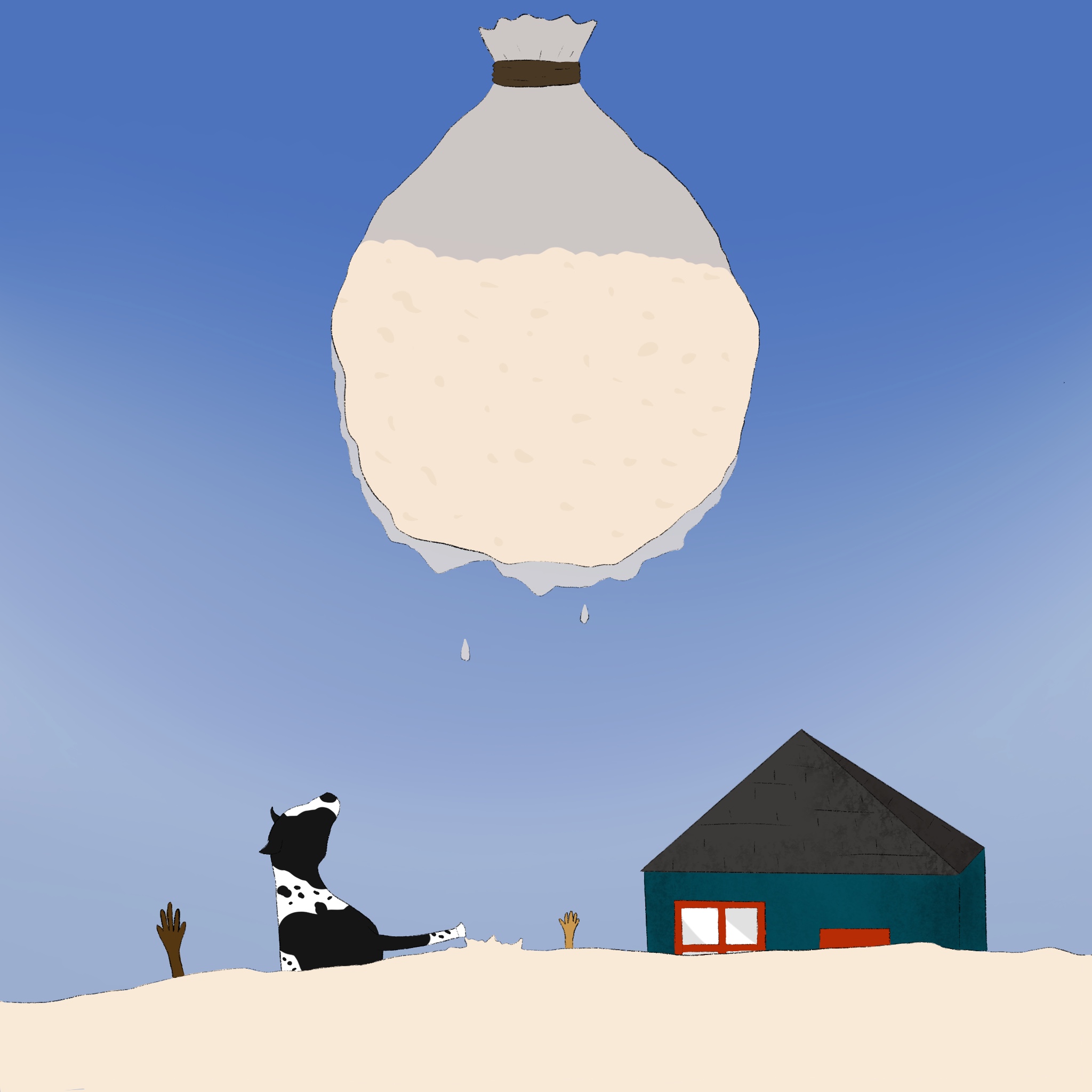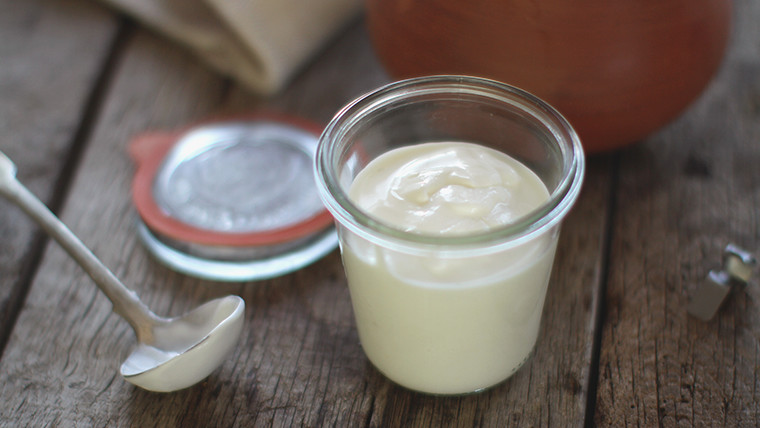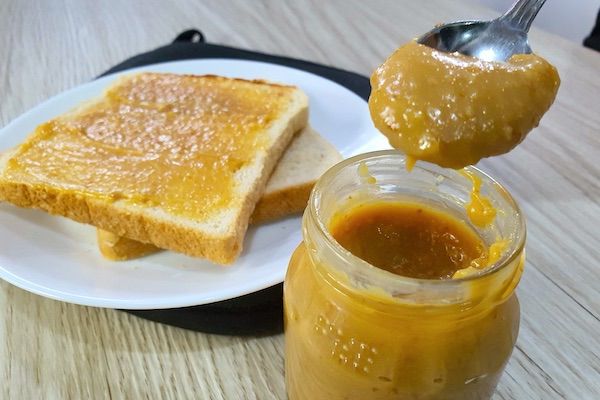Y IS FOR YOGHURT
By:
September 13, 2024

An installment in CONDIMENT ABECEDARIUM, an apophenic food-history series from HILOBROW friend Tom Nealon, author of the seminal book Food Fights and Culture Wars: A Secret History of Taste (2016 UK; 2017 US); and also — here at HILOBROW — the popular series STUFFED (2014–2020) and DE CONDIMENTIS (2010–2012).
CONDIMENT ABECEDARIUM: SERIES INTRODUCTION | AIOLI / ANCHOVIES | BANANA KETCHUP / BALSAMIC VINEGAR | CHIMICHURRI / CAMELINE SAUCE | DELAL / DIP | ENCURTIDO / EXTRACT OF MEAT | FURIKAKE / FINA’DENNE’ | GREEN CHILE / GARUM | HOT HONEY / HORSERADISH | INAMONA / ICE | JALAPEÑO / JIMMIES | KECAP MANIS / KIMCHI | LJUTENICA / LEMON | MONKEY GLAND SAUCE / MURRI | NƯỚC CHẤM / NUTELLA | OLIVE OIL / OXYGALA | PIKLIZ / PYLSUSINNEP SAUCE | QIZHA / QUESO | RED-EYE GRAVY / RANCH DRESSING | SAMBAL / SAUERKRAUT | TZATZIKI / TARTAR SAUCE | UMEBOSHI / UNAGI SAUCE | VEGEMITE / VERJUS | WHITE GRAVY / WOW-WOW SAUCE | XO SAUCE / XNIPEK | YOGHURT / YEMA | ZHOUG / ZA’ATAR | GOOD-BYE TO ALL TZAT(ZIKI).

Yoghurt is alive, man!
How many foods can you say that about? A few shellfish, insects, a worm or two. Sure, you say, anything fermented is alive, “real ale” is alive. But I don’t mean a few bacteria lingering on your cucumbers or at the bottom of your beer, I mean for real alive. Yogurt is thriving in there, living in its own excrement like a boss; eating lactose, excreting lactic acid, having the time of their lives.
In college I read Abbie Hoffman’s Steal This Book and learned that you could grow your own yoghurt overnight, and it would never go bad — just keep eating the spoiled bits and turning them back into fresh yoghurt. Is this true? Not quite, it turns out. But yoghurt does, if not mixed with sugars and fruit and preservatives and weird thickeners (to make it seem like Greek yoghurt even though it’s fat free), last a really long time. It will linger, just gradually eating every bit of sugar and turning it into acid until it has reached maximum sour, at which point there isn’t too much to go bad.
So Hoffman was onto something and, really, his point was that you can grow your own yoghurt for the price of some milk — which is pretty cool. That was my big takeaway from that book, especially once I realized that all of the free wild animals that Hoffman recommended claiming in 1971 were by the late 1980s no longer available from the National Park Service (shakes fist at the empty bison pen in my backyard). I made yoghurt for years with Hoffman’s method, which was both notionally and economically appealing.
(What else was in that book? I think Hoffman had a recipe for a thermite bomb for disabling cop cars — just drop it on the hood and watch it burn right through the engine block. Or was that in the Anarchist Cookbook? From the latter, ironically, I didn’t come away with any food recipes.)
The thing with making your own yoghurt is that — because it’s not filled with xanthan gum or guar gum or other thickeners — it’s pretty thin, at least compared to store-bought. So what you have to do is strain out some of the whey, like the Greeks do. All of this whey was no problem back in Hoffman’s time — people were barely eating any yoghurt at all in 1971, but now whey-straining has become a silent calamity. Approximately 125 million gallons of acid whey is disposed of every year in the US alone, most of it either fed to cattle or dumped in our waterways.
The solution? Save that acidic whey and use it to make gin drinks or — if you’re a teetotaler — a nice whey and tonic. Milk whey is not very nutritious, compared to cheese whey — you won’t see any spiders poaching yogurt whey — but it does have a nice lactic acid tang and an albumen-like mouthfeel, like a toned-down fizz.

Remember egg-white omelets? People used to love those flimsy piles of sad vegetables and connective tissue; what a time. However loathsome they were, though, they did create a surfeit of egg yolks that could be turned into all sorts of things. Or a few things. Or at least yema.
Yema is a Filipino spread made from condensed milk, salt, vanilla, butter, and egg yolks. It’s not too different from the French custard crème anglaise, but it’s made to be a thick spread — and is even simpler to prepare.
Yema is actually most similar to a mid-eighteenth century English dish from Hannah Glasse’s 1796 cookbook The Art of Cookery:
Marmalade of Eggs the Jews’ Way
Take the yolks of twenty-four eggs, beat them for an hour; clarify one pound of the best moist sugar, four spoonfuls of orange-flower water, one ounce of blanched and pounded almonds; stir all together over a very slow charcoal fire, keeping stirring it all the while one way, till it comes to a consistence; then put it into coffee cups and throw a little beaten cinnamon on the top of the cups. This marmalade mixed with pounded almonds with orange peel and citron are made in cakes of all shapes such as birds, fish, and fruit.
I can’t tell why people at that time thought that this concoction had some connection to Jewishness. I naturally assumed it was some weird anti-Semitic thing… but if it is, I can’t figure out the angle. And there’s nothing un-kosher about actual marmalade, so it’s a puzzler all around.
I like, though, the notion of fashioning a sort of weird marzipan out of the egg-yolk marmalade — almonds were in everything back then, just like now, but for opposite reasons. Then they were still exotic and exciting, an imported good from sunny Spain. Now, of course, we’ve just planted so many almond trees in California that we are forced to put them in every breakfast cereal, snack, and beverage just to get rid of them.
In any case, it’s an idea — making egg yolks into a sweet spread or topping — that has hung around for quite a long time, and it’s a good one. You can use yema as a cake frosting, bread topping at breakfast, put it in your coffee, or eat it plain. It takes no time to make — though, as Glasse cautions, it needs to be cooked slowly or else the yolks will cook before it turns into yema. And it will keep for a few weeks in a jar in the fridge.
Highest marks for yema – though it’s still not much of a marmalade replacement.
TOM NEALON at HILOBROW: CONDIMENT ABECEDARIUM series | STUFFED series | DE CONDIMENTIS series | SALSA MAHONESA AND THE SEVEN YEARS WAR | & much more. You can find Tom’s book Food Fights & Culture Wars here.
